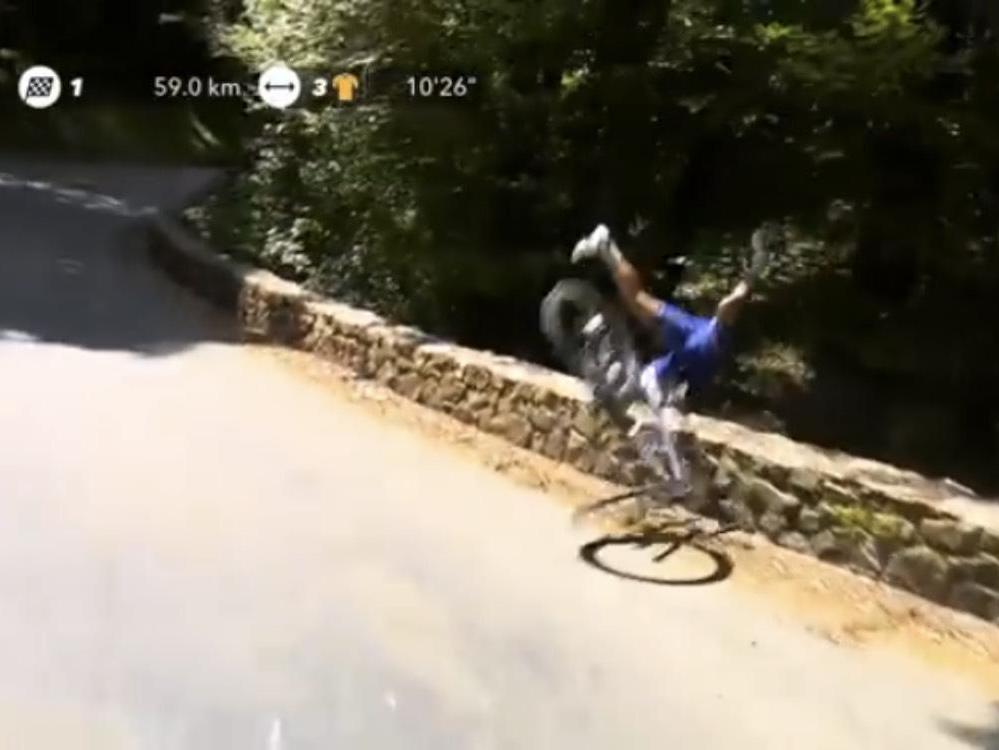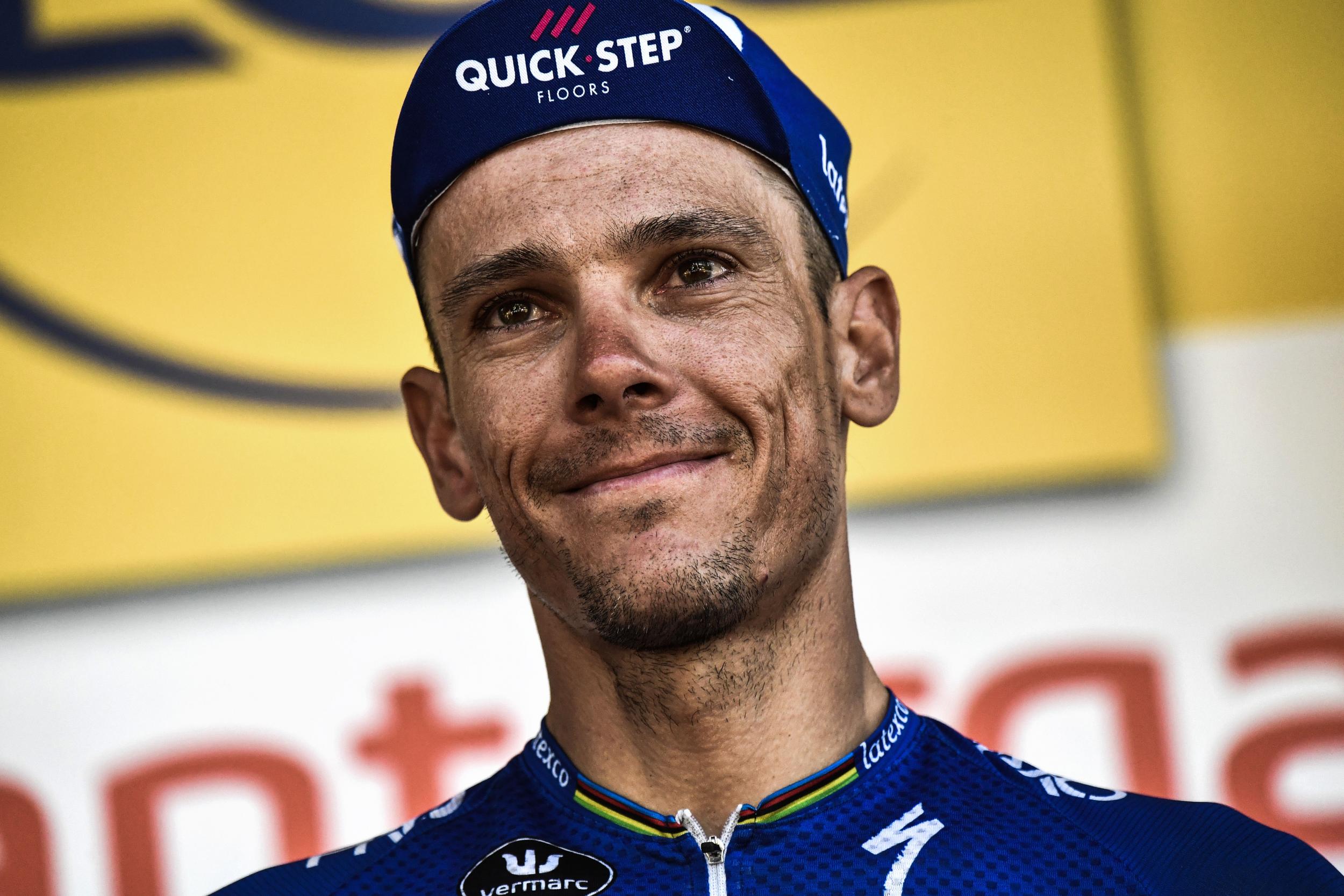Tour de France 2018: Philippe Gilbert abandons the race after horrific crash and an extraordinary feat of courage
It was later confirmed that Gilbert had a fractured lateral pole of the patella – a broken kneecap – yet had climbed back on his bike to ride out the final 50km

Your support helps us to tell the story
From reproductive rights to climate change to Big Tech, The Independent is on the ground when the story is developing. Whether it's investigating the financials of Elon Musk's pro-Trump PAC or producing our latest documentary, 'The A Word', which shines a light on the American women fighting for reproductive rights, we know how important it is to parse out the facts from the messaging.
At such a critical moment in US history, we need reporters on the ground. Your donation allows us to keep sending journalists to speak to both sides of the story.
The Independent is trusted by Americans across the entire political spectrum. And unlike many other quality news outlets, we choose not to lock Americans out of our reporting and analysis with paywalls. We believe quality journalism should be available to everyone, paid for by those who can afford it.
Your support makes all the difference.The replay is hard to watch without wincing. Philippe Gilbert was out on his own leading stage 16 of the Tour de France when he lost control of his bike on a left bend. His front wheel gave way on the damp asphalt, and as he wrestled with his handlebars he veered terrifyingly towards the edge of the mountain pass.
In the seconds when Gilbert hurtled off piste, the 1995 Tour flashed to mind and images of Italian rider Fabio Casartelli, who crashed and died on the same descent of the Col de Portet d’Aspet, aged 24, when he hit his head on concrete blocks on the roadside.
Fortunately Gilbert did not suffer the same fate. His bike crashed into the wall, propelling him over the edge, and although his body was battered and bruised and his lead had slipped away, he managed to complete the stage half an hour after the eventual winner, Julian Alaphilippe.
“It was not so bad,” he said immediately after the stage. “It was not so deep, I think about four metres, but there were a lot of stones and when I lay there I thought: ‘I broke everything’. I did not dare to move at first. I was waiting, but fortunately they were pretty quick [to help]. I have a lot of pain and my knee is badly battered, but I think I did not break anything, fortunately.”

What is extraordinary is that it was later confirmed that Gilbert had a fractured lateral pole of the patella – a broken kneecap – yet had climbed back on his bike to ride out the final 50km. He later abandoned the Tour, but he leaves it with an astonishing feat of bravery and perseverance.

And as perverse as it may seem, this is exactly why Gilbert moved to Quick-Step Floors. For four years his job at BMC was to support Cadel Evans and Richie Porte in their general classification ambitions, riding as a loyal domestique. The American team’s outlook was long term – a three-week strategy, biding time, avoiding incident and drama – and exactly the opposite of what makes Gilbert tick.
The Belgian thrives on the thrill of treating each stage as a new race to be won, a day to be attacked from the outset. As part of the self-dubbed Quick-Step ‘wolf pack’ he still has to support his team-mates’ aims, like the sprint ambitions of Fernando Gaviria earlier in the Tour, but the emphasis at Quick-Step is about living in the present; you never know when you might end up in a roadside ditch.
The 36-year-old is at a point in his career when he doesn’t have enough time left to be selfless, and instead must put his own priorities first. On Tuesday he went for an unlikely victory, attacking from range knowing that he was unlikely to hold off the strong climbers on the final ascent, the Col du Portillon. It failed painfully, and now he departs the Tour, but he goes out doing what he loves: fighting to win the day.

Join our commenting forum
Join thought-provoking conversations, follow other Independent readers and see their replies
Comments